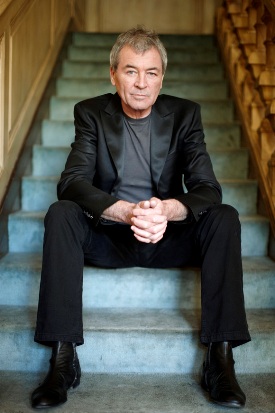
-
DEEP PURPLE - Shades Of Deep Purple / The Book Of Taliesyn / Deep Purple (Reissues) - 9/109/10
Summary
Eagle Rock Entertainment
Release date: July 26, 2011
User Review
( votes)It’s hard to imagine Deep Purple as a youthful, vibrant, and naïve band. The band has been around for over 40 years, and is easily considered one of key pioneers of Hard Rock and Heavy Metal. The Deep Purple Mk. 1 line-up was formed in 1968. All of them were young, in their early 20’s, and were relatively unknown artists. Ritchie Blackmore was a session guitarist. Jon Lord was a classically-trained keyboardist and brought along his friend and bassist Nick Simper. Drummer Ian Paice and vocalist Rod Evans were in a previous band together and decided to join Deep Purple.
These first three albums were more or less Pop-Rock albums of the time. They featured simple melodies, lots of sound effects, and some very inexperienced musicianship. This is psychedelic pre-Ian Gillan era Deep Purple. The music is very experimental and focused on the creation of what is to become the core Deep Purple sound. The songs on these three albums were clearly more organ-based, as opposed to the edgy and bluesy Blackmore guitar riffs that later defined their signature sound.
With the re-issue of these three albums, there are several exciting bonus tracks featured on each album. Their debut album Shades Of Deep Purple was released in July, 1968. The big hit was the song “Hush”, which was actually a cover of an original recording by Country artist Joe South. The song reached #4 on the US Billboard Charts, and made Deep Purple an international sensation. One of the bonus tracks is a live recording of “Hush” from a US television appearance. Also featured are an instrumental version of “Love Help Me”, an alternate version of “Help”, and a live television performance of “Hey Joe”.
Another very exciting feature of the re-issues is each album contains at least one previously unreleased studio outtake song. The song “Shadows” appears on the Shades Of Deep Purple, “Oh No No No” and “Playground” are included on The Book Of Taliesyn, and “Emmaretta” shows up on Deep Purple, which ironically became the final track recorded by the Mk. 1 line-up.
Most of the bonus tracks from The Book Of Taliesyn and Deep Purple were live recordings from a BBC radio show called Top Gear. Although many were cuts from the albums, there were a couple of unreleased tracks such as “It’s All Over” and “Hey Bop A Re Bop”, which definitely show the experimental side of these early Deep Purple recordings. Of course, the downside to these bonus tracks is the extremely inferior sound quality, as most were recorded in mono, and are very grainy. However, the original studio released tracks are all digitally remastered with very good sound quality.
Shortly after the original release of these three albums, and extensive touring in the United States, the band’s record label Tetragammaton went out of business, leaving the Deep Purple with no money and an uncertain future. However, Deep Purple went on to become legendary icons, and now fans can enjoy the great music from these early, blossoming years of the band as well.




Be the first to comment